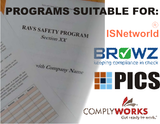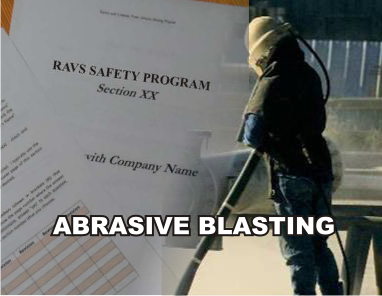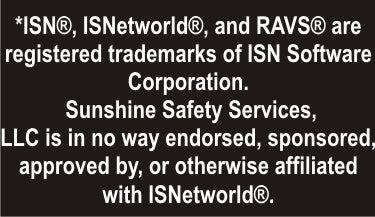Abrasive Blasting Program - ISNetworld RAVS Section - US
$ 24.95
Abrasive Blasting Program - ISNetworld RAVS Section - US

This Abrasive Blasting Program (ISNetworld® RAVS®* Section), in addition to being a complete and functioning written safety program (chapter), it also contains all the required text elements that are sought by the ISNetworld RAVS® (Review And Verification Service) reviewer. This plan has been previously submitted and has achieved a 100% approval rating for our clients.
- All programs are guaranteed now and in the future to achieve 100% approval.
- There are NO maintenance or subscription fees.
- Simply notify us if any program falls out of compliance and we will correct it at NO CHARGE.
You are downloading a MicroSoft® Word document file to your computer that is completely editable:
- Abrasive Blasting Program:
- Approximate Word Count: 1,155
- Approximate Number of Pages: 5
- Page Reference Answers to RAVS Reviewer’s Questions: 9
You will also receive instructions for a simple two-step process to place your company name and safety person's name throughout this word document to conform it to your company. Please review, and feel free to alter or add to it as you wish with any specific company information or safety policies that you may already have.
The first two pages of the document are guidelines for conforming this safety manual section, an index for completing the RAVS® questionnaire (with all page references), and uploading the section.
If you experience any difficulty filling out the questionnaire, or have any questions in general about these documents, call 314-570-0072, or e-mail me at vsunshine1@gmail.com.
An excerpt from ISNetworld® RAVS®* Safety plan Abrasive Blasting Program
Types of coatings. A surface coating formed during the fabrication of a part, or a protective coating applied after fabrication, will be removed and dispersed as a dust by abrasive blasting. The type of coating should be known to make a proper evaluation of the potential hazard.
Silica sand is frequently embedded in the surface of castings and may be pulverized by blast cleaning.
Coatings containing toxic metals will add to the potential seriousness of the dust exposures. Examples of such coatings are anti-fouling paints containing mercury, lead paints on structural steel, cadmium plating, and lead deposits on pistons of internal combustion engines.
Plastic or resin coatings may be decomposed by the action of the abrasives to form irritating by-products.
Wet abrasive blasting. Wet methods will tend to keep dust exposures minimal, but droplets dispersed and dried residues which become airborne may create potential exposures.
Concentrations of contaminants. The concentration of respirable dust or fumes in the breathing zone of the abrasive-blasting operator or any other worker shall be kept below the recommended levels.





